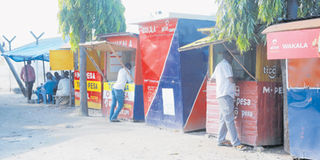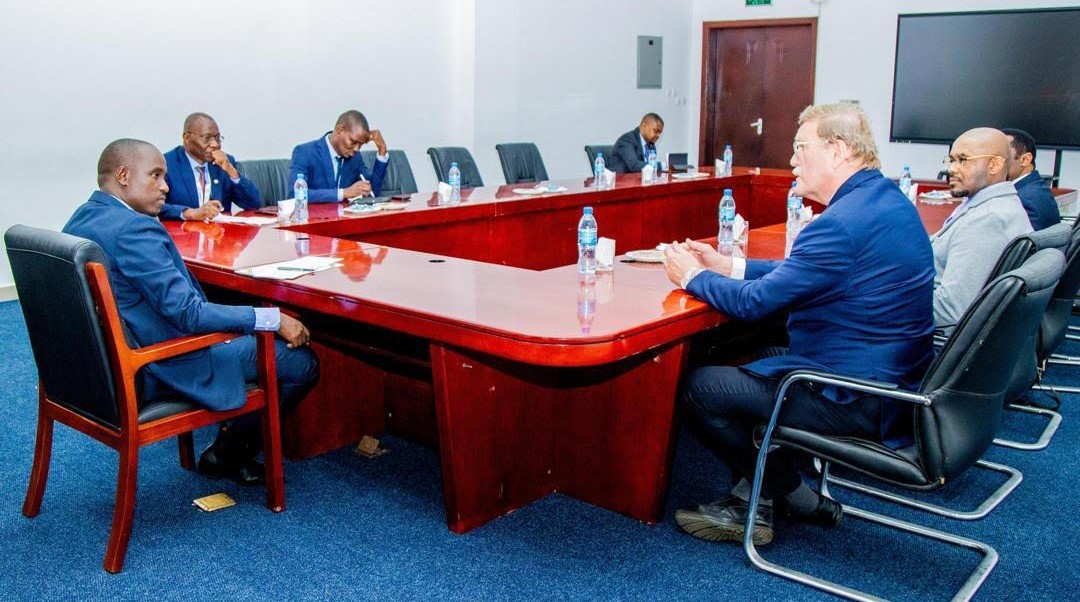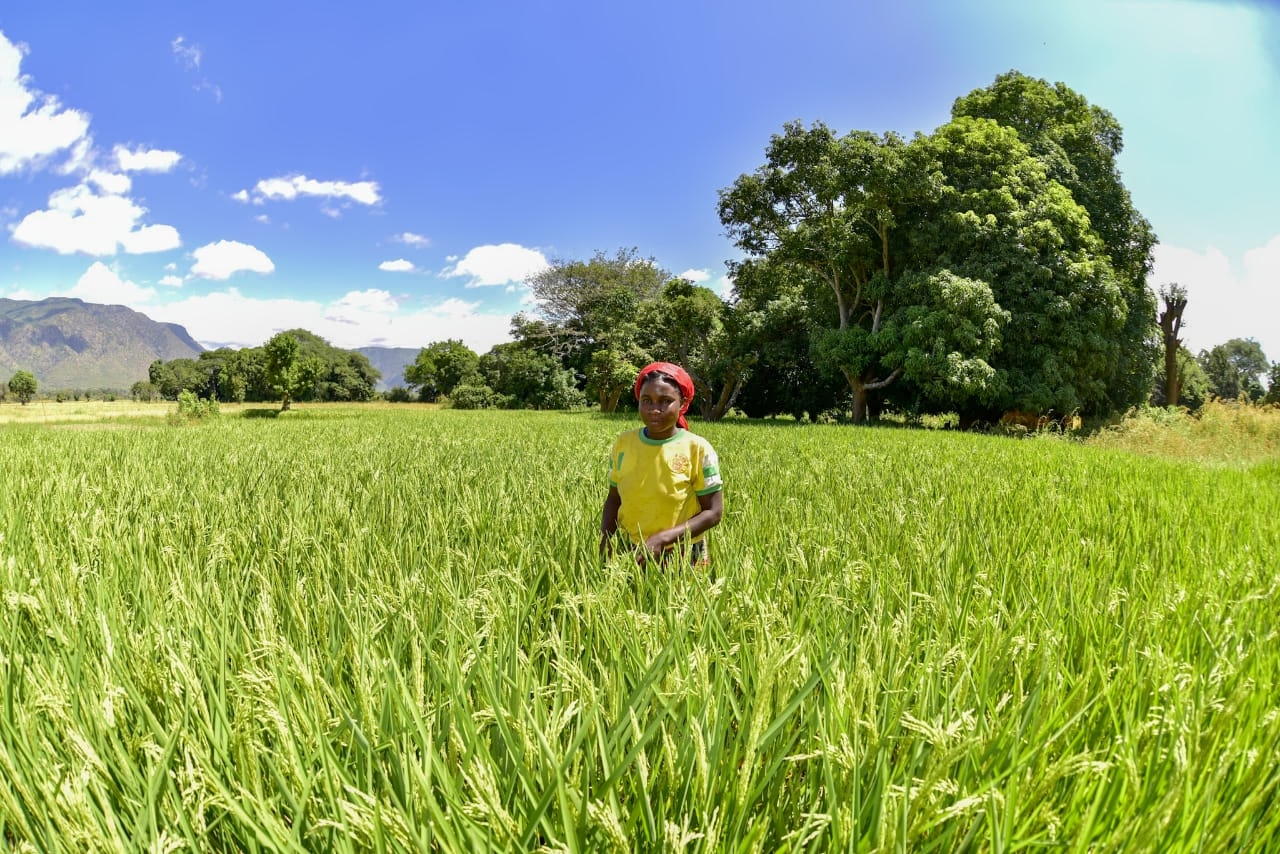SPECIAL REPORT :47pc of GDP transferred in mobile money revolution

Customers being served at mobile money transfer booths in Dar es Salaam.PHOTO|FILE
What you need to know:
- Only eight years later, financial inclusion increased fivefold to reach 86 per cent putting Tanzania well ahead of most Sub-Saharan African countries.
- All this is because of the mobile money revolution that has seen Sh43 trillion being transferred through mobile phones annually — equivalent to 47 per cent of the gross domestic product.
Dar es Salaam. When Vodacom introduced the mobile money transfer service, M-Pesa, in 2008 financial inclusion in the country was below 16 per cent.
Only eight years later, financial inclusion increased fivefold to reach 86 per cent putting Tanzania well ahead of most Sub-Saharan African countries.
All this is because of the mobile money revolution that has seen Sh43 trillion being transferred through mobile phones annually — equivalent to 47 per cent of the gross domestic product.
Reasons for mobile money revolution
Just in a decade mobile money has surpassed the small network laid by banks to include the vast majority of poor Tanzanians to the wider financial circle.
The changes have enabled families to share the little they have in a fraction of seconds, no matter the distance separates them.
According to a World Bank report titled ‘Tanzania Economic Update, Money Within Reach; Extending Financial Inclusion’ released last week a number of reasons are behind the rapid growth of mobile money in the country.
Mobile money has helped bridge the vast distances among people, enabling much lower thresholds for profitable service provision, enhancing convenience of service, and reducing delivery times.
Mobile money also enables people to make payments for services such as electricity and make international money transfers.
Since the service became popular it resulted in stiff competition among mobile network operators (MNOs) and that helped reduce the cost of money transfers.
The mobile financial services landscape in Tanzania is unique. Four major players compete for customers, while at the same time competition is also enhanced by the sharing of the agent network between MNOs. Fifty-two per cent of the agents serve multiple providers compared with only four per cent in Kenya.
This is beneficial to consumers in terms of both the number of access points and service costs. One is charged $0.17 for transferring $20 compared with $0.37 in Kenya.
The market leader in Tanzania, Vodacom’s M-Pesa, has a market share of 54 per cent, followed by Tigo Pesa with 29 per cent, Airtel Money 13 per cent and Ezy Pesa four per cent. In Kenya, Safaricom (M-Pesa) has the market share of 95.5 per cent.
Since February 2016, the four main MNOs in Tanzania have become interoperable, enabling users to perform person-to person payments between accounts operated by different service providers, albeit with some limitations.
“Mobile money is now the most popular instrument used by Tanzanians to save. Interestingly, the increase in savings has occurred despite the decline in the proportion of people who saved using services provided by a bank or other financial institutions from 11.9 to 9 per cent, indicating that some individuals may have moved away from banks towards mobile money,” noted the WB report.
Mobile money accounts allow account holders to store up to Sh3 million or $ 1,400 in their m-wallets, with these savings receiving interest at rates ranging from 2 per cent to 5 per cent, comparable with the average rate provided by banks of 3.4 per cent as of December 2015.
Why the service is limited
The report also argues that one of the reasons why mobile money has spread so fast is because traditional banking and non-bank financial services (microfinances) have been so underdeveloped.
With 2.5 bank branches and 6.4 ATMs per 100,000 adults, Tanzania ranks in the bottom quartile of countries in terms of access to traditional financial access points.
However, despite the expansion of mobile money services, the banks continue to play a central role to intermediate savings and access to credit. Aggregate data shows that the volumes intermediate by mobile money are small compared with those intermediated by banks.
“At the end of 2015, the value of mobile money stocks — the money deposited in trust accounts by MNOs in commercial banks, accounted for less than three per cent of total bank deposits at around Sh452 billion or $229 million, with total bank deposits standing at Sh18.6.trillion or $9 billion.
“Similarly, loans extended through mobile money products were estimated to make up less than one percent of the total value of bank credit,” reads the WB report in part.
That means the expansion of mobile money has changed nothing to micro, small and medium-sized enterprises in their quest for financing assistance in enhancing their productivity and investments.
Only 13 per cent of small, formal firms have a bank loan, a figure considerably lower than the average figure of 17 per cent for sub-Saharan Africa.
The way forward
The report noted that for individuals and small-scale businesses, the use of mobile money has reduced direct and indirect costs and increased safety.
It also facilitates the creation of a digital footprint that could progressively support users’ access to the broader financial sector and enable their entry into the formal economy. “MNOs have a wealth of data pertaining to the financial transactions of users and increasingly use this information to assess client creditworthiness. Such information, if shared with other financial actors, could also contribute to extending bank credit to a larger number of individuals, and to micro and small informal businesses. Over time, this process will support a path towards formalisation for these mostly informal businesses.”
WB also noted that Tanzania is on the right track to make further progress in the area of financial inclusion. However, to address the remaining gaps and challenges, it is necessary to focus future efforts in three main directions, as identified in the Tanzania Financial Inclusion Framework.
The first direction is reaching the last mile, which involves extending access to financial services access to remaining proportion of the unserved population, particularly women, to achieve universal financial access.
Second is deepening inclusion by consolidating the gains and progressively advancing the use of financial services to increase the benefits of financial access; and
Lastly, expanding access to credit, by making affordable credit available to businesses as a tool to achieve the economic growth envisaged in Tanzania’s Five-Year Development Plan.




